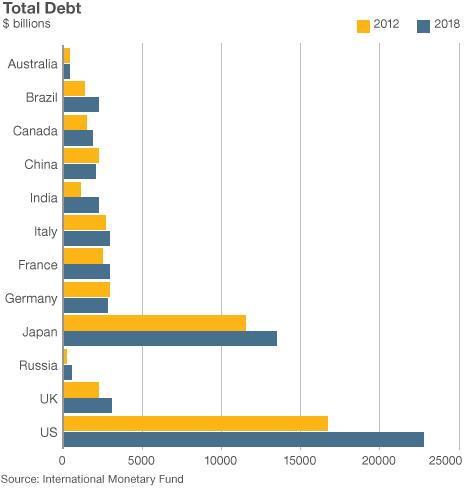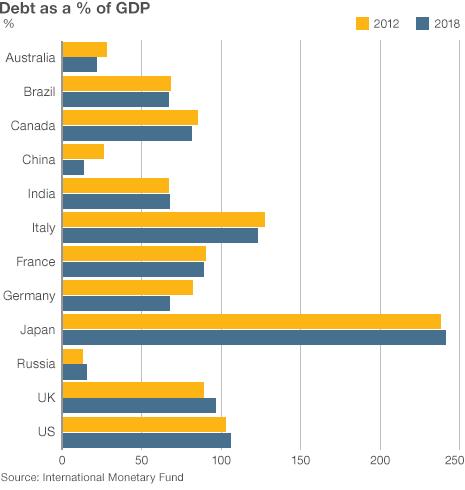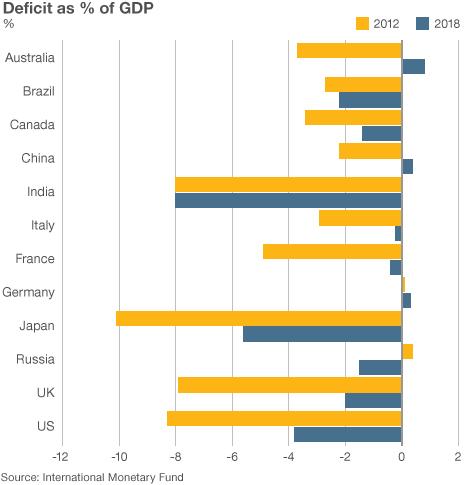How bad are US debt levels?
- Published
Taken out of context, the numbers are staggering. The US has a total debt pile of almost $17 trillion (£10.6 trillion), which is expected to rise to almost $23tn in the next five years.
But how does that compare with other major economies?
Japan is not far behind, with current debts totalling $11.5tn. By any standards, these are big, big numbers.
And these countries are not alone - almost every major global economy has debts of more than a trillion dollars, according to the International Monetary Fund (IMF).

But context is needed - after all, debt is not necessarily a problem if you have the income to cover it.
That is why the two most common measures used to gauge a nation's indebtedness are:
total debt, as expressed as a percentage of total economic output (GDP)
budget deficit, the amount by which a government's expenses exceed its income, expressed as a percentage of GDP
Some governments actually run a surplus - in other words their income exceeds their expenses. Running a surplus is one of the best ways to reduce overall levels of debt.
Looking at debt-to-GDP tells us that total US debt is roughly equivalent to its annual economic output. It is by far the largest economy in the world, and has the largest debt pile.
Japan is the world's third largest economy, but its huge pile of debt is more than double its GDP. The only other country whose debts outstrip economic output is Italy, although a number of others come close - namely the UK, France and Canada.
Even Germany, traditionally seen as fiscally responsible, has a debt-to-GDP ratio of more than 80%.

Much of this debt has been accumulated over the long term, but the numbers have rocketed in recent years as governments have struggled to cope with the 2008 financial crisis and the subsequent recessions that have ravaged almost all major economies. Banking bailouts, economic stimulus measures and falling tax revenues have all forced governments to borrow more.
For example, in 2007, the UK's debt pile was just 44% of GDP compared with 88% last year. This reflects in part the country's large financial sector relative to its overall economy. The US's debt-to-GDP ratio in 2007 was 64%, the same as France and Germany.
By contrast, the debt-to-GDP ratio in China and India, which have seen economic slowdowns but no recession, has not moved significantly over the past five years, nor is it set to deteriorate in the next five. Indeed in the case of China, it is set to fall significantly.
The picture elsewhere is less encouraging. The IMF estimates that Germany aside, those countries with high levels of indebtedness will struggle to reduce debt levels in the coming years.
The UK, where the government has made much of reducing debt levels, will actually see the debt ratio edge towards 100% of GDP.

One reason for this is governments' inability to move from an annual deficit to a surplus. In other words, an inability to live within their means.
The IMF estimates that only Australia and China of the world's 12 largest economies will move into surplus by 2018, while Germany will increase its surplus further. Russia, it thinks, will move from a surplus to a deficit.
However, most major economies are expected to make good progress in reducing their deficits.